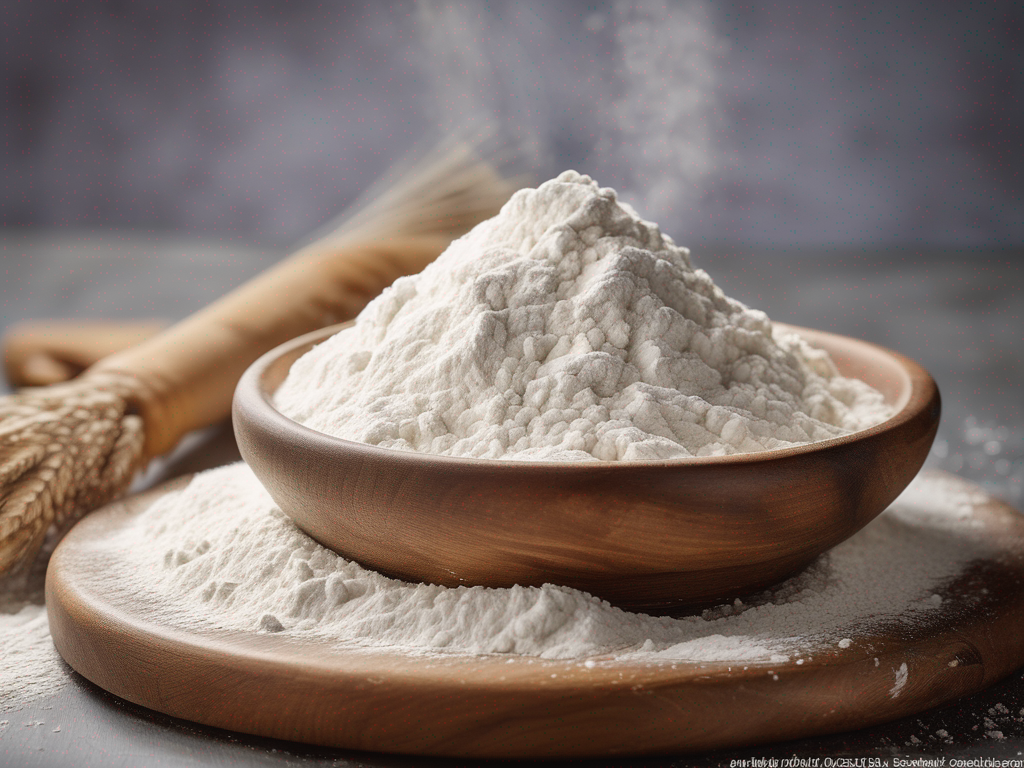
How to Naturally Extend the Shelf Life of Flour
Get Your Free Food Safety Cheat Sheet
30 most common foods with instant answers. Print it and stick it on your fridge—completely free!
How to Naturally Extend the Shelf Life of Flour
Flour is a staple ingredient in many kitchens around the world, used for baking bread, cakes, cookies, and more. However, storing flour properly is essential to maintain its freshness and quality. In this blog post, we will discuss some natural ways to extend the shelf life of flour, ensuring that your baked goods turn out perfectly every time. (Flour)
Understanding Flour Shelf Life
Flour is a pantry staple that can last for a long time if stored correctly. However, it is essential to understand that flour can go rancid over time due to its high oil content. Whole grain flours, such as whole wheat or rye flour, have a shorter shelf life compared to refined flours like all-purpose flour. Here are some factors that can affect the shelf life of flour:
Factors Affecting Flour Shelf Life
-
Storage Conditions: Proper storage is crucial to extending the shelf life of flour. Exposure to heat, light, air, and moisture can cause flour to spoil more quickly.
-
Type of Flour: Whole grain flours contain more oil and nutrients, making them more prone to rancidity compared to refined flours.
-
Packaging: The packaging of flour plays a significant role in its shelf life. Flour stored in airtight containers or bags will last longer than flour stored in open containers.
Natural Ways to Extend Flour Shelf Life
Now that we understand the factors that affect the shelf life of flour let's explore some natural ways to extend its freshness:
1. Store Flour in a Cool, Dark Place
- Keep flour away from heat sources such as stoves or ovens.
- Store flour in a cool, dark pantry or cupboard to prevent exposure to light.
- Avoid storing flour near appliances that generate heat, as this can cause the flour to spoil quickly.
2. Use Airtight Containers
- Transfer flour to airtight containers or resealable bags to prevent air and moisture from reaching the flour.
- Mason jars or food-grade plastic containers are excellent options for storing flour.
- Make sure the containers are clean and dry before transferring the flour to them.
3. Freeze or Refrigerate Flour
- To extend the shelf life of flour, consider storing it in the freezer or refrigerator.
- Place flour in airtight bags or containers before freezing to prevent moisture absorption.
- Allow frozen flour to come to room temperature before using it in recipes.
4. Rotate Your Flour Stock
- Practice the "first in, first out" method when using flour to ensure that older stock is used before newer purchases.
- Label flour containers with the purchase date to keep track of their freshness.
- Regularly check your flour supply for any signs of spoilage, such as off odors or discoloration.
5. Keep Flour Away from Strong Odors
- Store flour away from strong-smelling foods such as spices, onions, or garlic.
- Strong odors can be absorbed by flour, affecting its flavor and freshness.
- Consider using separate storage containers for flour to prevent odor transfer.
Conclusion
By following these natural ways to extend the shelf life of flour, you can ensure that your baked goods taste fresh and delicious every time. Proper storage, including keeping flour in a cool, dark place, using airtight containers, and rotating your flour stock, is key to maintaining its quality. Experiment with different storage methods to find the one that works best for your kitchen and baking needs. With these tips, you can make the most of your flour supply and enjoy baking with fresh ingredients every time. Flour (Flour)
Related Posts
Here are some other articles you might find helpful:
- How Long Can Fresh Angel Hair Pasta Unopened Last in the Pantry?
- The Ultimate Guide to Properly Storing Flour to Prevent Pests and Mold
- How to Properly Store Flour Tortillas to Prevent Mold Growth
- Extending the Shelf Life of Fresh Angel Hair Pasta Opened in the Pantry
- Top Tips for Preserving the Quality of Common Wheat in Your Pantry
Authoritative Food Safety References
These agencies and university labs inform every tip and health precaution we publish.
USDA FoodKeeper – Cold Storage Guidelines
Official refrigerator, freezer, and pantry timelines maintained by the U.S. Department of Agriculture.
Visit USDA FoodKeeperFDA Produce Safety Rule & Grower Guidance
Field-to-fridge handling practices that prevent contamination of fruits, vegetables, and leafy greens.
Visit FDA Produce SafetyCDC Foodborne Illness Prevention Hub
Surveillance-backed guidance on pathogens, symptoms, and steps to reduce foodborne illness risk.
Visit CDC Food SafetyUC Davis Postharvest Technology Center
University research detailing optimal storage atmospheres for produce after harvest.
Visit UC Davis PostharvestPenn State Extension – Home Food Preservation & Safety
Peer-reviewed extension bulletins on safe canning, chilling, and reheating practices.
Visit Penn State ExtensionGet Your Free Food Safety Cheat Sheet
30 most common foods with instant answers. Print it and stick it on your fridge—completely free! Want more? Upgrade to the complete guide with 70+ foods.
Scan your food directly and get instant safety info using our AI-powered camera feature.